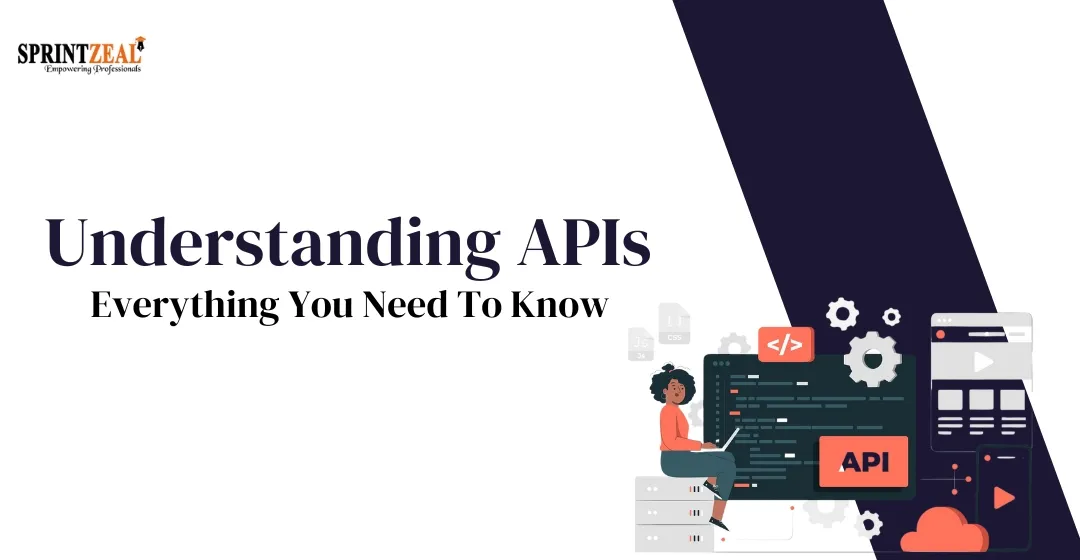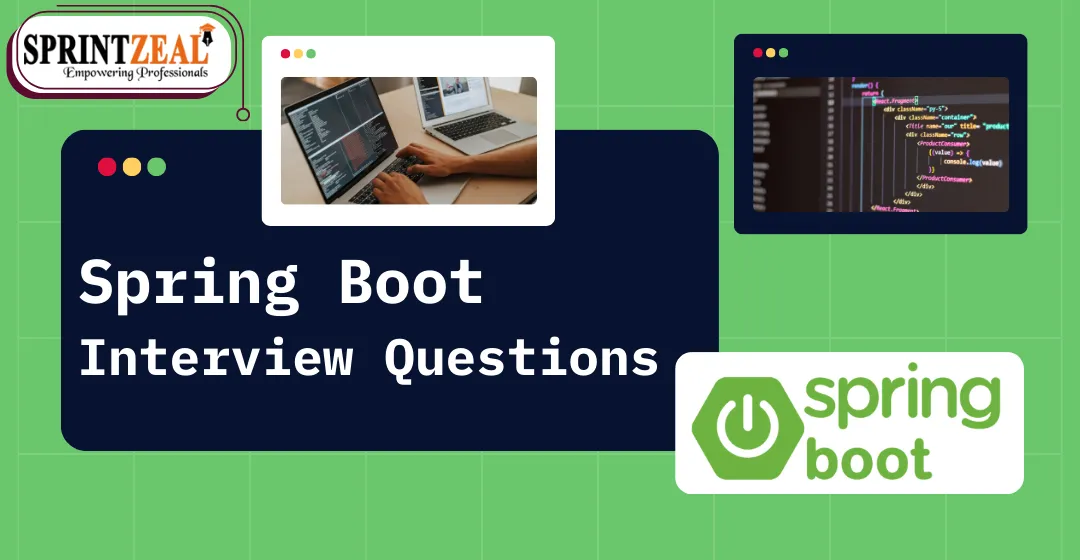Latest LINQ Interview Questions and Answers for Freshers & Experienced
-
 By Rai Sinha
By Rai Sinha - Published on Oct 1 2025

LINQ, or Language Integrated Query, is a powerful set of technologies that is just as important as mastering syntax when preparing for technical interviews. It is integrated in languages like C# and other .NET languages. Whether you're applying for a full-stack or backend developer career, you'll definitely face LINQ interview questions that will test your theoretical knowledge and practical abilities in front of the interviewer.
These types of LINQ interview questions consist of a range from dealing with projections and joins to comprehending deferred execution and query optimisation. Here, we have tried to cover a few of the most important LINQ interview questions to assist you in going into your next interview with confidence and securing the job successfully.
Table of Contents
LINQ Interview Questions and Answers for Beginners
1. What purpose do anonymous functions serve in LINQ?
Do you know what the functions that have no name or no name at all are called? We referred to them as "anonymous functions." They are mostly used in LINQ for brief inline expressions that frequently provide brief bits of reasoning, particularly when used with methods like Where(), Select(), or OrderBy().
They are very useful for small pieces of logic that will not be reused multiple times. A typical example of this is the use of lambda expressions within LINQ queries. This allows you to provide filtering logic in a more compact way.
Example:
var result = numbers. Where( (x => x >10);
Then, x => x >10 is an anonymous function.
2. What does the Where clause do in LINQ?
The Where clause in LINQ is used to filter data based on a condition. It’s original to the WHERE clause in SQL and allows you to return only those elements from a collection that meet a specific condition.
Example :
var filteredList = employees.Where( e = > e.Department == " HR");
This line returns all elements from the HR department and is one of the most generally used LINQ styles for filtering data efficiently.
3. How does LINQ improve over traditional stored procedures?
One of the reasons LINQ is extensively adopted is that it brings type safety, compile-time checking, and IntelliSense support directly into the code, unlike stored procedures.
Here, we have stated how LINQ is better
You can write LINQ in C# code itself, reducing context-switching between SQL and code.
- Easier to maintain and refactor.
- Helps avoid SQL injection since LINQ queries are parameterised.
- Allows integration with in-memory collections, databases, XML, etc.
This is a very common question that is very frequently asked in LINQ C# interview questions, so having a good example prepared can definitely help you get an edge.
4. Can you explain the difference between deferred and immediate execution in LINQ?
In LINQ, deferred execution means that the query isn't executed when it's defined, but rather when it's iterated over.
Example of deferred execution:
var query = list. Where(x => x > 5); // Not executed yet
foreach (var item in query) // Executed here
{
Console.WriteLine(item);
}
Immediate execution, on the other hand, forces the query to run immediately and store the results.
For example,
var result = list. Where( x = > x> 5). ToList();// Executed immediately
Understanding this difference is important and frequently comes up in LINQ interview questions because it directly affects the performance along with memory operations.
5. What makes anonymous types useful in LINQ?
- Anonymous types are an important feature that allows you to produce an object without defining a class for it.
- They're especially useful in LINQ when projecting results with only specific properties. For example :
var query = employees.Select( e = > new{ e.Name, e.Email});
This creates a new anonymous type with Name and Dispatch properties and is perfect when you only need a subset of fields temporarily.
6. How can you group data using LINQ?
To group data in LINQ, you use the group by clause. It’s also similar to SQL’s GROUP BY.
Example:
var grouped = employees.GroupBy( e = > e.Department);
This group's employees are divided by their department. You can also iterate through each group to access related data.
Grouping is a very important technique, hence you can anticipate this to pop up in LINQ queries interview questions.
7. What's LINQ to XML?
LINQ to XML is a feature that allows developers to work with XML documents in a more readable and structured way using LINQ syntax.
Rather than using old DOM or XPath styles, LINQ to XML lets you load, query, and manipulate XML using standard C#.
For example,
XDocument doc = XDocument.Load("data.xml");
var items = from item in doc.Descendants("Product")
where (int)item. Element("Price") > 100
select item;
It’s a clean and effective way to interact with XML lines using LINQ in C#.
8. How are Data Context classes used in LINQ?
The DataContext class is the bridge between a LINQ-enabled. NET operation and a database..
For example,
MyDataContext db = new MyDataContext();
var result = db.Employees.Where( e = > e.City == " London");
It’s essential to understand this if you are asked LINQ C# interview questions involving database commerce.
9. Can you describe the architecture of LINQ?
At a high rate, the LINQ architecture is composed of :
- Language Extensions – Includes query syntax( from, where, select, etc.) and lambda expressions.
- LINQ Providers – similar to LINQ to Objects, LINQ to SQL, LINQ to XML, etc. Each provider interprets LINQ queries for the separate data source.
- Standard Query Operators – Like Select, Where, GroupBy, OrderBy, etc., that define the LINQ styles.
- Data Source – The factual collection or external source( like a database or XML) that you're querying.
10. What are the benefits of using LINQ with a DataSet?
The main benefits of using LINQ with a DataSet are as follows :
By using LINQ with a DataSet, you get the permission to query directly in C# or VB.NET in a strongly-typed manner that greatly improves code readability and maintainability over ADO.NET. Furthermore, LINQ provides richer query capabilities—including filtering, sorting, and joining across tables—that the team over there has concisely written and expressive code. Unlike ADO.NET, LINQ works with IntelliSense and also enjoys compile-time checking of data operations, which helps dramatically reduce run-time errors.
Let's try to understand this with an example, to query the data from a DataTable, "Products", in the DataSet, so that the products are ordered by price. You code:
Csharp
var query = from product in ds.Tables["Products"]. AsEnumerable()
order by product.Field("ListPrice") descending
select product;
This top LINQ interview questions blog will also cover essential LINQ in C # interview questions related to query syntax and lambda expressions.
LINQ interview questions for intermediate level
Here, we have made a list of all the important LINQ interview questions for the intermediate level.
1. What's the difference between LINQ to SQL and LINQ to Entities in C#?
LINQ to SQL is an ORM(object-relational mapping) approach that works directly with SQL Server and maps database tables to classes. It uses DataContext and translates LINQ queries into SQL statements.
LINQ to Entities is the query element of Entity Framework. It works with the Entity Data Model( EDM), supports multiple database providers( not just SQL Server), and handles more advanced features such as heritage mapping, navigation properties, change tracking, and migrations. Another practical difference is the supported methods since LINQ to Entities translates queries into expressions in the underpinning provider, certain. NET methods or overloads( especially custom or customer-side logic) may not be supported.
Also, LINQ to SQL is more limited in features( less flexible mapping, smaller providers), whereas LINQ to realities( EF) tends to be feature-rich and suited for more complex business disciplines.
2. Can you explain the concept of projection in LINQ?
Projection is the act of transforming each element of a source sequence into a new form (shape) using Select or SelectMany. In other words, projection is how we “project” only certain fields or compute derived values. Microsoft Learn+1
For example,
var names = persons.Select( p = > p.Name);
Then, we project each person object into just its Name property.
If you have nested collections( e.g., a list of orders where each order has order lines), SelectMany helps flatten them
var allOrderLines = orders.SelectMany( o = > o.OrderLines);
Select returns a sequence with the same number of elements, while SelectMany flattens subcollections into a single sequence. Microsoft Learn + 1
3. What's the purpose of the Union method in LINQ, and how is it different from Concat?
Union returns the set union of two sequences; it combines both sequences but removes duplicates( based on default or supplied equality). It also implicitly orders the result according to the underpinning provider’s semantics.
Concat simply appends one sequence after another, preserving all elements( including duplicates) in order.
In short
Union = combine + distinct
Concat = simple append
So, if you want unique elements across two collections, use Union. However, use Concat if you want to save everything(even duplicates).
4. How does LINQ let you work with multiple collections or sequences together?
LINQ provides several operators to combine or correlate multiple collections
Join – inner join between two sequences based on key selectors.
GroupJoin – group join( left join style grouping)
SelectMany – flatten multiple sequences( e.g., from nested collections)
Zip – Pairs elements from two sequences
Union/ Intersect Except – pairs elements from two sequences
Also, LINQ query syntax lets you use multiple from clauses
from a in collectionA
from b in collectionB
select new{ a, b}
This is original to a cross join( or can be filtered to behave like an inner join). In methodsyntax, that corresponds to nested. SelectMany(.) calls.
5. What's the distinction between Select and SelectMany in LINQ?
Select transforms each element in the source into one result value. However, you will end up with a sequence of sequences if your selector returns a collection.
SelectMany transforms each element into a sub-collection ( an IEnumerable), and also flattens those sub-collections into one single sequence.
Therefore, SelectMany is useful when your data is nested or has child collections and you want a flat result. Microsoft Learn + 2O' Reilly Media + 2
For example,
// Using Select
var listOfLists = orders.Select(o => o.OrderLines); // yields IEnumerable
// Using SelectMany
var flatLines = orders.SelectMany(o => o.OrderLines); // yields IEnumerable
6. How can you use Aggregate in LINQ for custom aggregations?
Aggregate is a powerful method to fold( reduce) a sequence into a single result by applying a function cumulatively. You supply
- A seed( original accumulator value)
- A function that takes the accumulator and the coming point, and returns a new accumulator
- A finalizer to transform the result
Example - sum of numbers multiplied by 2
int result = numbers.Aggregate( 0,( acc, n) = > acc n * 2);
// Then, seed = 0, and each iteration adds n * 2 to the accumulator.
Another example of concatenating strings
string joined = words.Aggregate("",( acc, w) = > acc( acc == ""?""",") w);
Aggregate can apply numerous custom folds( min, maximum, consecution, custom business sense) beyond the built-in bones
like Sum, Min, Max, etc.
7. What’s the difference between TakeWhile and SkipWhile in LINQ?
Both TakeWhile and SkipWhile accept a predicate and operate on the sequence in a streaming way
- TakeWhile( predicate) takes elements from the beginning as long as the predicate is true. Once the predicate fails for an element, the rest of the sequence is ignored.
- SkipWhile( predicate) skips elements from the launch while the predicate is true, and once it fails, returns all the rest( including the one that failed the predicate and subsequently).
illustration
var arr = new(){ 1, 2, 3, 0, 4, 5};
Use TakeWhile to get a prefix satisfying a condition; use SkipWhile to omit such a prefix and keep the remainder. This can be considered as one of the important LINQ
To master LINQ interview questions, practice solving common LINQ in C # to strengthen practical coding skills
8. What's GroupJoin in LINQ, and how would you use it?
GroupJoin is a LINQ operator that correlates elements from two sequences( external and inner) and groups the corresponding elements from the inner sequence under each outer element. It’s similar to a left-external join with grouping.
Signature (simplified):
outer.GroupJoin(inner, outerKeySelector, innerKeySelector, (outerElem, innerGroup) => ...)
For each element in outer, innerGroup is the collection of matching inner elements( or an empty group if none).
You can also project as demanded using those groups.
Example script - You have departments and workers, and want to list departments along with their employees( or empty if none).
var query = departments.GroupJoin(
workers,
d = > d.DeptId,
e = > e.DeptId,
( dept, empGroup) = > new{
Department = dept.Name,
workers = empGroup
);
In query syntax, it may look like
from d in departments
join e in workers on d.DeptId equals e.DeptId into empGroup
elect new{ d.Name, empGroup}
This is frequently used when doing left joins where the “ numerous ” side is grouped per external record.
9. How can you perform a full external join in LINQ when it’s not directly supported?
LINQ doesn’t offer a built-in full outer join operator, but you can simulate it by combining left external join and right external join, or by using the union of two GroupJoin results with proper handling. Here, we have stated one approach :
- Left join A with B( yielding elements and matching Bs, including cases where B is null).
- Left join B with A( to catch Bs that had no match in A).
- Use Union( or Concat) to combine both sets, taking care to avoid duplicates.
Pseudo-code
var left wing = from a in A
Join b in B on a.Key equals b. Key into bg
from b in bg.DefaultIfEmpty()
select( a, b);
var right = from b in B
join a in A on b. Key equals a.Key into ag
from a in ag.DefaultIfEmpty()
select( a, b);
var full = left.Union( right);
- Another option is using GroupJoin and also leveling with DefaultIfEmpty for both sides in a more manual “outer” logic.
- Since these patterns are much more complicated, interviewers frequently expect you to sketch the conception or write a simple snippet.
10. What does deferred execution mean in LINQ, and can you give an example?
Deferred execution means that a LINQ query isn't executed at the moment you define it; rather, execution is deferred until you iterate over the results( e.g., with foreach, or call a terminal system like ToList(), Count(), First()). The evaluation happens later, and frequently can reflect changes to the data source up to that moment.
Example:
List figures = new List{ 1, 2, 3};
var evens = numbers.Where( n = > n 2 == 0);// no prosecution yet
( 4);
foreach( var e in evens)
( e);// prints 2 and 4
Then, the Where query is remitted; it doesn’t pick the rudiments until recitation, so by the time we reiterate, the modified list is considered. If you forced immediate execution:
var list = numbers.Where( n = > n 2 == 0). ToList();
Now, it is able to execute immediately, capturing the current state, and further changes to numbers are not going to affect the list anymore.
LINQ interview questions for the advanced level
1. What’s the actual difference between IEnumerable and IQueryable when writing LINQ queries?
This is one of the most common LINQ interview questions, especially in C# interviews.
IEnumerable is used for in-memory collections, like lists or arrays. It's great when the data is already loaded and you just want to filter or transform it.
IQueryable, on the other hand, is used for querying remote data sources (like a SQL Garçon database). The big difference is that IQueryable builds an expression tree, which gets restated into SQL and executed on the server. This is more effective when working with large datasets.
You can think of IQueryable as a remote control for your database; it does not cost data until you hit "play" (deferred execution), while IEnumerable works with data that’s already been downloaded.
2. How can you make LINQ queries more effective when working with large databases?
- Performance tuning comes up a lot in LINQ queries interview questions, especially when dealing with real-world data.
- To keep your LINQ queries sharp:
- Avoid ToList() or ToArray() beforehand – these methods force the query to execute immediately, pulling all results into memory.
- Use projections( Select) wisely. Only fetch the fields you need rather than pulling entire objects.
- Use AsNoTracking() in Entity Framework for read-only data — it skips change shadowing and improves speed.
- Filter beforehand( Where) and combine filters in a clever way to reduce what’s transferred to the database.
- Index your database duly. LINQ generates SQL under the hood, so a slow query in LINQ frequently means a slow SQL query.
- This is one of those LINQ interview questions where they want to see if you understand how LINQ maps to actual SQL under the hood.
3. What does deferred execution really mean in LINQ, and why should you watch?
Deferred execution is a concept that pops up in numerous LINQ interview questions because it influences performance and gesture.
In simple terms, deferred execution means your LINQ query does not run when you write it; it runs when you actually use the result( like in a foreach loop or by calling ToList()).
This can be good for performance, because it avoids gratuitous work, but it can also be a problem for you if the underpinning data changes before you use it.
Real-life example - You write a query to pull workers with a payment> 50K. Still, you might get different results than anticipated if someone updates hires before your query runs.
This conception is super common in LINQ queries interview questions because it tests both your knowledge of LINQ and your understanding of how C# manages memory and data access.
4. How can you avoid the N 1 query problem when using LINQ with Entity Framework?
This issue comes up a lot in intermediate LINQ C# interview questions related to Entity Framework.
The N1 problem happens when
You query a parent reality( e.g., Departments)
also access an affiliated reality( e.g., workers) in a circle
Entity Framework fires one query for the parent, and one redundant query for each child
You can fix this through -
Use eager loading with. Include() to cost everything in one go
var departments = context.Departments.Include( d => d.Employees). ToList();
This is a very important performance tip and is frequently included in real-world LINQ interview questions that assess your capability to optimize database access.
5. How can you apply pagination to LINQ queries in ASP.NET or any web app?
Pagination is a frequent topic in LINQ in C# interview questions, especially for web development roles.
To paginate data with LINQ, use Skip() and Take()
int pageSize = 10;
int pageNumber = 2;
var pagedResults = context.Products
OrderBy( p = > p.Name)
Skip(( pageNumber- 1) * pageSize)
Take( pageSize)
ToList();
This is effective because only the needed records are pulled from the database, assuming you are using IQueryable and not converting to ToList() beforehand.
This question is a great test of your practical understanding of LINQ queries in real-world web apps.
Tips for LINQ interview questions :
Here are 6 tips for successfully navigating LINQ interview questions. The word "LINQ interview questions" appears in the following sentences 8 times:
- Familiarity with the appropriate baseline knowledge of LINQ will give you the confidence to answer LINQ interview questions on query syntax, operators, and data sources.
- In your preparation, practice writing LINQ query syntax and method syntax. LINQ interview questions often seek to assess your knowledge in writing LINQ questions using both syntax types.
- Be sure to be familiar with the core concepts of LINQ, specifically deferred execution, lambda expressions, and anonymous types, all of which may appear frequently in LINQ interview questions.
- Be prepared to answer or explain your optimization of LINQ questions to provide a performance perspective, as this is a common theme in advanced LINQ interview questions.
- Test yourself by writing practice code to construct a solution to real-world problems, which will better enable you to describe your process and thoughts in your performance of LINQ interview questions.
- Be aware and prepare to distinguish between LINQ to Objects, LINQ to SQL, and others if asked about the differences. This is common in many expectations in LINQ interview questions.
Conclusion
The goal of mastering LINQ is to know when and how to utilize each method efficiently and not to memorize them all. Through the above-discussed LINQ interview questions, we have tried to give you a thorough understanding of how LINQ functions conceptually and how it interacts with databases, collections, along with custom C# logic. Whether you're applying for a full-stack or backend developer career, you should definitely check out our full-stack web development course for a better career scope.
Thus, we can say that these C# LINQ interview questions are intended to help you develop clearer as well as more effective code for actual projects and at the same time help you get ready for interviews.
Subscribe to our Newsletters
Popular Programs
Trending Posts
Understanding APIs: What You Need To Know
Last updated on Jul 30 2025
15 Spring Boot Interview Questions and Answers (2024 Update)
Last updated on Nov 23 2022
Spring Interview Questions With Answers (2025)
Last updated on Sep 26 2025
Kubernetes Interview Questions and Answers 2025
Last updated on Feb 20 2025
Top Docker Interview Questions And Answers 2025
Last updated on Apr 24 2025
HTML 5 Interview Questions and Answers 2024
Last updated on Nov 18 2022
Categories
- Other 63
- Agile Management 57
- Cloud Computing 50
- Project Management 170
- Big Data 58
- Business Management 82
- Digital Marketing 73
- IT Service Management 29
- Programming Language 47
- AI and Machine Learning 67
- IT Security 108
- Quality Management 77
- IT Hardware and Networking 25
- Microsoft Program 4
- Workplace Skill Building 11
- Risk Management 9
- Information Security 8
- Leadership and Management 7
- Corporate Training and Development 1
Trending Now
Top 25 Java Interview Questions and Answers in 2024
ArticleJIRA Software – Uses, Purpose and Applications
ArticleJava Interview Questions and Answers 2024 (UPDATED)
ArticleLinux Interview Questions and Answers 2024 (UPDATED)
ArticleTop Docker Interview Questions And Answers 2025
ArticleSQL Interview Questions and Answers 2025
ArticleKubernetes Interview Questions and Answers 2025
ArticleLatest HTML Interview Questions and Answers 2024
ArticleC# Interview Questions and Answers - UPDATED 2024
ArticleHTML 5 Interview Questions and Answers 2024
ArticleJAVA Scanner Class Guide 2024
ArticleTop React Interview Questions and Answers
ArticleBest Python Interview Questions and Answers 2026
ArticleTop Tableau Interview Questions and Answers 2024
ArticleTest Manager Interview Questions and Answers for 2025
ArticleMost Trending Programming Languages in 2024
ArticleGuide to Becoming a Salesforce Developer
ArticleWeb Developer Certifications Trending in 2024
ArticleProgramming Certifications that Pay Well
ArticleTop 5 Python Certifications - Best for 2026
ArticleOOPs Interview Questions and Answers
ArticleManual Testing Interview Questions and Answers 2024
ArticleJavaScript Interview Questions and Answers 2024 (Update)
Article15 Spring Boot Interview Questions and Answers (2024 Update)
ArticleBest Programming Language to Learn in 2026
ArticleOOPs Concepts in Java: Basics, Characteristics and its Examples
ArticleTop 20 Microservices Interview Questions and Answers
ArticleTop Oracle Interview Questions and Answers
ArticleTop MongoDB Interview Questions for 2025
ArticleHow to Become a Full-Stack Developer: A Step-by-Step Guide
ArticleTest-Driven Success: How Jenkins Turns TDD into a Breeze!
Article10 Best Mulesoft Integration Service Providers in 2025
ArticleHow to Become a Laravel Developer in 2025: A Step-by-Step Roadmap
ArticleCan Low-Code Platforms Really Save Time and Costs in IT Projects?
Article5 Programming Languages That You Should Learn
ArticleUnderstanding LMS: The Go-To Guide
ArticleUnderstanding APIs: What You Need To Know
ArticleJava OOPs Interview Questions and Answers (2025)
ArticleTop AngularJS Interview Questions and Answers (Freshers & Experienced)
ArticleTop Mobile Testing Interview Questions and Answers for 2025
ArticleAndroid Interview Questions 2025
ArticleSpring Interview Questions With Answers (2025)
ArticleShell Scripting Interview Questions
ArticleHibernate Framework Interview Questions and Answers (2025)
ArticleComprehensive PHP Interview Questions and Answers for 2025
ArticleTop jQuery Interview Questions and Answers (2025 Guide)
Article







